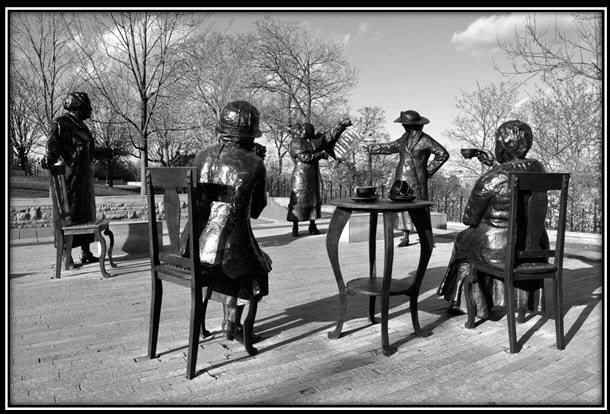When asked to choose the court decision they found most interesting and significant two UBC law students serving as interns in the Provincial Court selected the same Supreme Court of Canada case. Can you guess what case they chose?
UBC’s Allard School of Law offers students an opportunity to spend one term as interns in the BC Provincial Court. They do research for and are mentored by judges, and reflect on their experiences in class discussion and reports. It’s a win-win situation. The program gives students a unique perspective on the court system and judges find exposure to the students’ energy and enthusiasm stimulating and refreshing.
One thing both judges and students agree on is that the law is not dull. This spring students were invited to suggest cases they find both interesting and important for an eNews article. Both Chelsea Tenant and Jennifer Lang-Hodge wrote movingly about one case.
Chelsey Tennant wrote:
“In 1922, Emily Murphy, as Canada’s first female magistrate, was a highly accomplished professional. However, when her name was forwarded for a Senate appointment, she was rejected. Parliament asserted that, as much as they would like to appoint her, they simply were not allowed. The British North America Act only allowed qualified “persons” to become Senators, and women were not “persons”.
Unwilling to accept this, Emily Murphy gathered four more women activists. These women, known as “the Famous Five” petitioned the Supreme Court of Canada to interpret whether women were “persons”. The Court ruled unanimously that when the Act was written in 1867, “persons” was understood to include only men. Thus, the Act was clear that women were not “persons” and could not be Senators.
Not to be defeated, the Famous Five appealed to the British Privy Council (which heard appeals from the Supreme Court of Canada until 1949). In a seminal 1929 ruling, the Privy Council reversed the Supreme Court’s decision, finding that women were, indeed, “persons”. The Privy Council accepted that in 1867 the term “persons” only referred to men, but they conceded that by 1929 this was no longer the case. In his judgment, Viscount Sankey held that present-day society should not be burdened by “a relic of days more barbarous than ours.” He famously said, “… to those who would ask why the word [persons] should include females, the obvious answer is why should it not.”
A short time later in 1930, Cairine Wilson was appointed Canada’s first female senator. Edwards v. Canada (Attorney General), known as The Persons Case, was a landmark decision for gender equality in Canada.”

The Women are Persons! Monument, Parliament Hill, Ottawa
Photo: Senate of Canada Fact Sheet
Jennifer Lang-Hodge elaborated on the legal significance of the decision:
“This case is not only significant because of what it has done for women’s rights in Canada, but also for what it has done for Constitutional Law through its creation of the “living tree doctrine”. These two aspects of the case are interrelated, and demonstrate how important it is to view the Constitution as something that must adapt to reflect society, rather than be confined to outdated norms from the nineteenth century.
Reading this case opened my eyes to what women only 100 years ago had to endure. I cannot imagine being told that I am not a “person” and so am limited as to my role within society. Thanks to these women I have never been told such a thing, and am able to study law knowing that I have the ability to become a lawyer, judge, senator, or Prime Minister.
This case is also important to me because of the living tree doctrine. As Viscount Sankey held in his decision, the British North America Act is “a living tree capable of growth and expansion within its natural limits.” I consider the living tree doctrine to be a fundamental aspect of Canadian law, as it allows society to grow and adapt to changing perspectives, and thus, has enabled Canada to become a world leader of social change. Unlike other countries, we are not fixed to the intentions of men 200 years ago, and instead, can adapt to our ever-changing world.”
Chelsey Tennant agreed, “87 years later, this case is still symbolic of gender equality in Canada, and still makes me proud. Because of the Persons Case, I have opportunities I wouldn’t have otherwise, and I am deeply appreciative for this reason.”
On October 18, 2000 the Women are Persons! Monument shown here was unveiled to commemorate the Persons Case and the Famous Five: Emily Murphy, Henrietta Muir Edwards, Nellie McClung, Louise McKinney, and Irene Parlby.
This article provides general information only and should not be used authority in court proceedings or as a substitute for legal advice.

